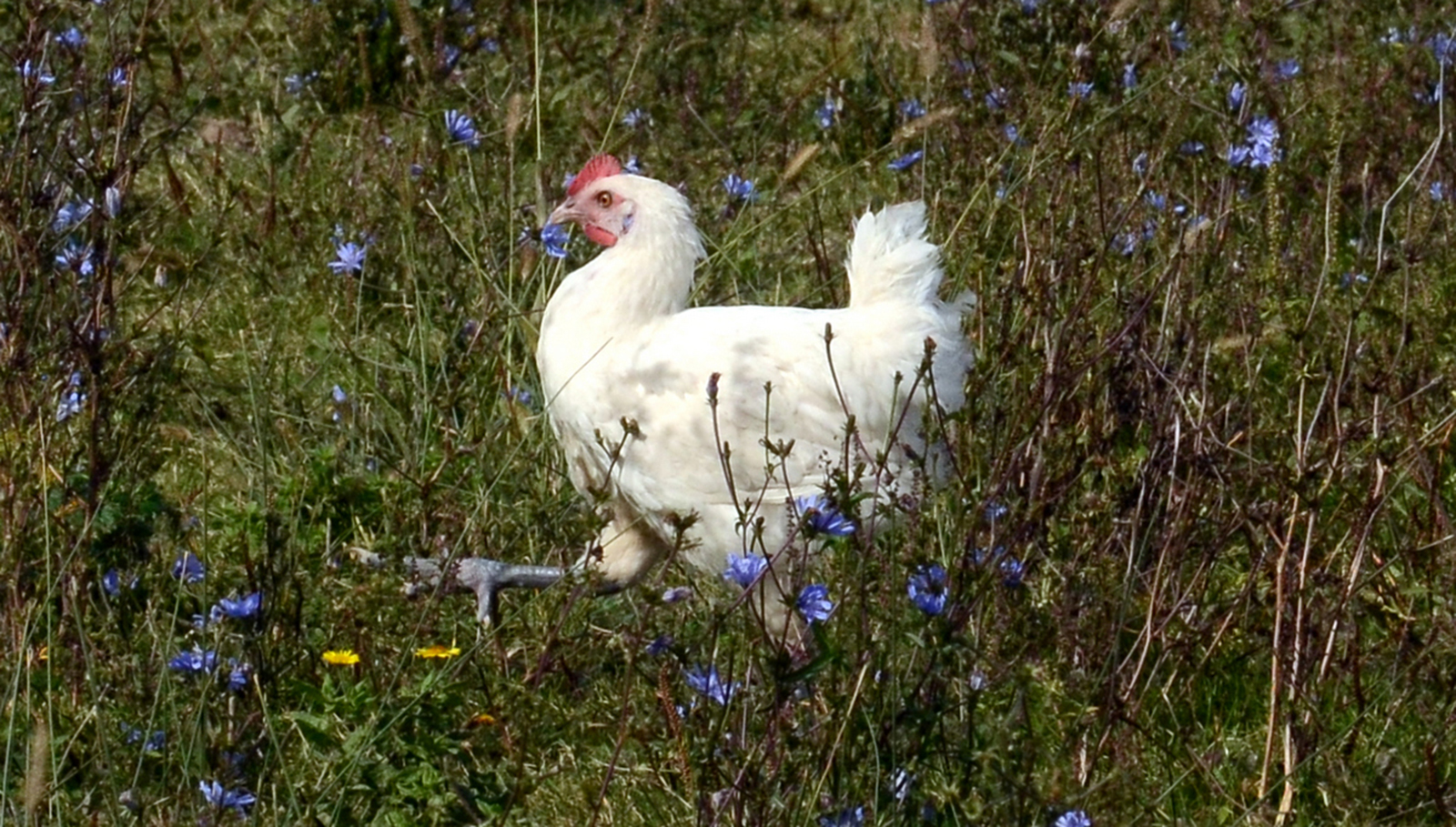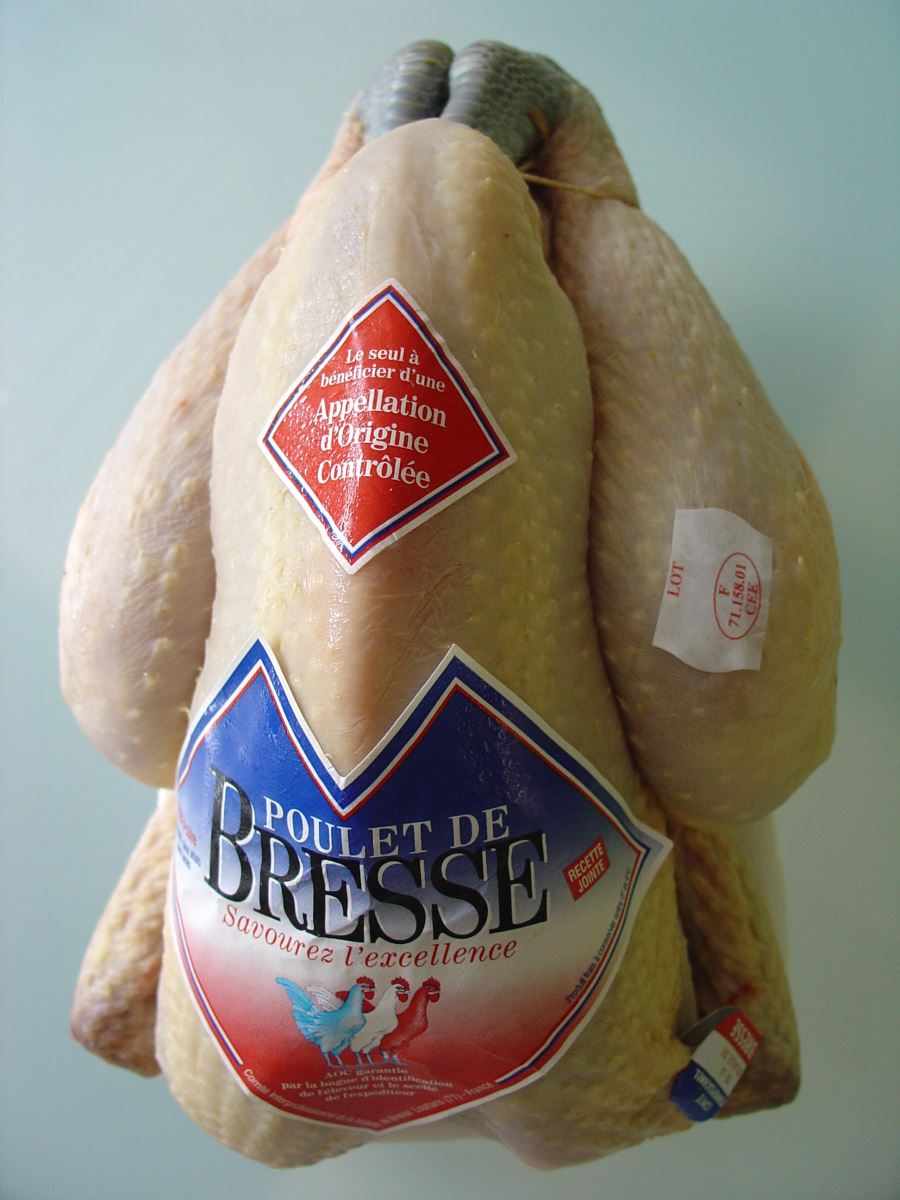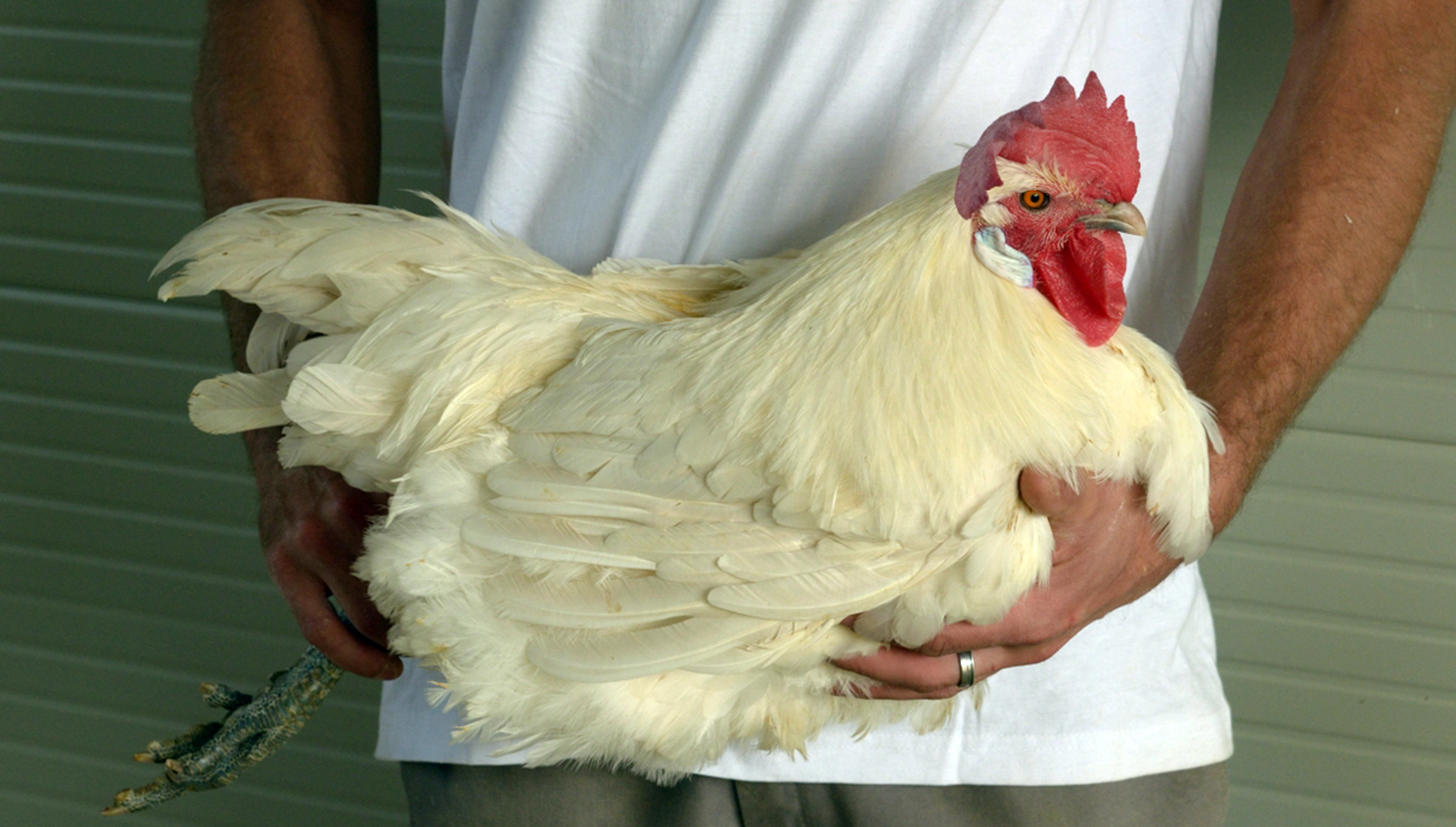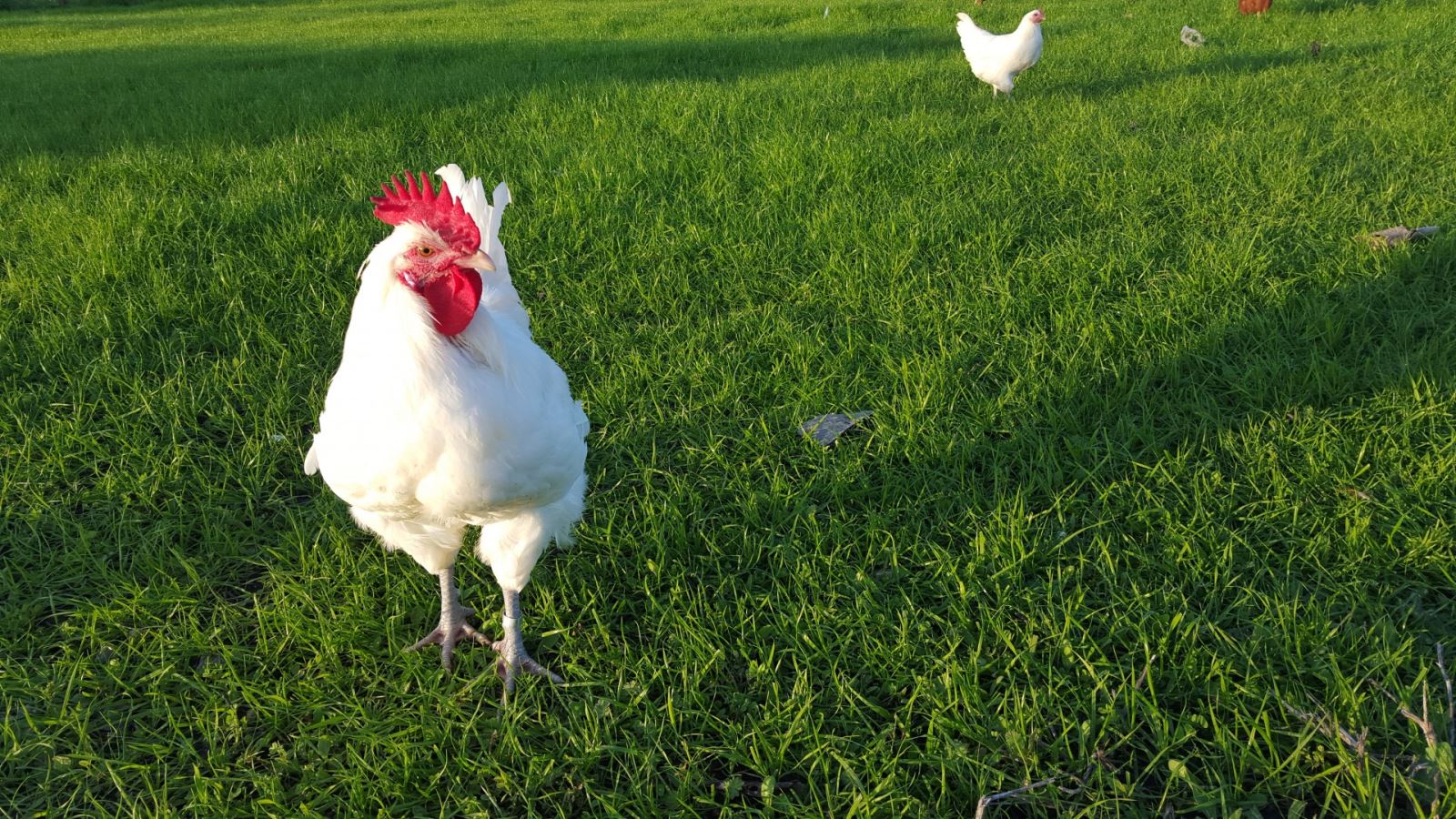This is a domestic chicken from France. People legally breed Bresse chicken in the province of Bresse, in the regions of Rhône-Alpes, Bourgogne, and Franche-Comté, in eastern France. Bresse chicken the most expensive chicken in France. Why this chicken has a high price? It happens because this chicken only breeds in eastern France and only 5% of the population that exported.

The Bresse chicken is traditionally cultivated and it has strict controls to breed. One of the rules is for each breeder must have a minimum of 0.5 ha of pasture in the area of production, and allow a minimum of 10 m2 per bird. Then, for Each bird must pass an examination by the Center de Sélection de la Volaille de Bresse.
The price for this chicken is commanding a cool €40 per kilogram ($48) in the butcher shops of Paris. Bresse chicken is The most expensive chicken in the world. But the price can be increased for some reason. The meat of this chicken can be floating up to €100 for a 3kg capon.

Volaille de Bressem it seems, is the original corn-fed chicken.
Its fame spread in the 19th century aided by the fact that the breed of white chickens (the Bresse de Bény variety) it is produced from matches the colors of the French flag — blue legs, white body and red comb.
The ultimate accolade came 60 years ago, when the Bresse chicken became the first live foodstuff to obtain a protected designation of origin certification (AOC) now valid across the European Union, something usually granted to items like Champagne, Parma ham or Stilton cheese.

There are around 180 farms rearing Bresse chickens in a legally defined area of Bresse. The Laurency family farm, which lies seven kilometers from Louhans, raises 20,000 Bresse chickens a year.
"Not only must a certificated chicken be reared in Bresse, but also only eat food grown in the region," says Anthony, the youngest farm hand while pointing out the chickens foraging freely in the fields; by law they must have 10 meters of area each.

"The feed is intentionally poor in protein so that the birds must forage for insects, worms or snails as well as grass to supplement their diet."
Their muscle must be turned into fat before they reach our tables, so they're rested in wooden cages called "épinettes" in rooms with low diffuse light while they eat, dream and chill out.
The farm buys chicks from a centralized selection center that guarantees the purity of the breed — which was nearly extinguished in the flames of World War II.
Chicks arrive when they are just a day old and cost $2.40 each, unlike other breeds you can buy for just 35 cents a piece.

Most Bresse chickens are slaughtered by the time they are four months old, while the larger "poulardes" — females on the verge of ovulating — are allowed to live one month longer.
The biggest and most precious of them all is the capon, a castrated rooster that must "go through all seasons."
Accoroding to edition.cnn











